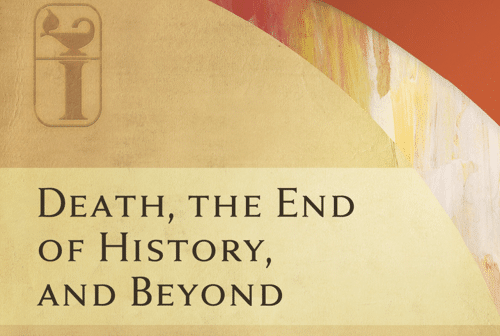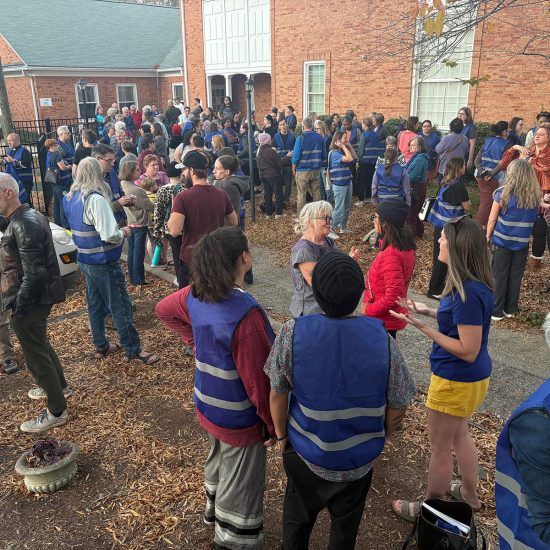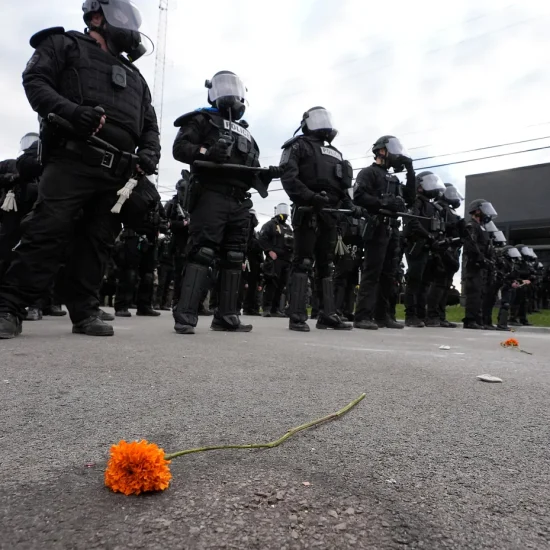

DEATH, THE END OF HISTORY, AND BEYOND: Eschatology in the Bible. (Interpretation: Resources for the Use of Scripture in the Church). By Greg Carey. Louisville, KY: Westminster John Knox Press, 2023. Xiii + 350 pages.
Enquiring minds in most mainline Protestant churches seem interested in what the future holds. That is especially true when it comes to questions about what happens to us after we die. At the same time, I’ve noticed over the years that many of my clergy colleagues would rather avoid such subjects. What this means is that folks in our congregations end up listening to voices like Tim LaHaye or Hal Lindsey, assuming that they offer the biblical perspective. If you go to Amazon and look up eschatology most of the books in the top 100 will be books similar to those offered by LaHaye and Lindsey. The good news is that there are books out there that do offer alternatives to these popularizers. In the year 2023, two books appeared, both published by Westminster John Knox Press, that provide alternative understandings of Christian eschatology (study of Last Things). I co-authored one of those books with Ronald J. Allen — Second Thoughts about the Second Coming: Understanding the End Times, Our Future, and Christian Hope. While we pitched our book to a general audience, the second book, Greg Carey’s Death, the End of History, and Beyond: Eschatology in the Bible, which is part of the Interpretation series of Resources for the Use of Scripture in the Church, is pitched to a more academically inclined audience. Taken together these two volumes provide the church with important resources for a conversation that needs to be held in our churches.

Robert D. Cornwall
Death, the End of History, and Beyond is pitched to both scholars and clergy. It focuses on the biblical perspectives on eschatology (study of Last Things). It is authored by Greg Carey, Professor of New Testament at Lancaster Theological Seminary. Carey has written several other books that deal with eschatology and apocalyptic literature, so he brings a great deal of expertise to the subject. As I read Carey’s book, I kept wishing that I had had access to it as we were writing Second Thoughts About the Second Coming. Reading this volume, I found myself largely in lockstep with Carey’s conclusions. Whether one agrees in whole or part, Carey has laid out for us in great detail how the biblical authors have understood death, the afterlife, the direction and possible end of history, and other eschatological matters. Carey understands that our knowledge of the future is quite limited. Unlike LaHaye and others like him, Carey doesn’t attempt to be a prognosticator of the future. What he does in this volume is show us what biblical authors have to say about these matters. Thus, he provides us with an academically sound and scholarly lens through which we can view the ways in which the future might unfold.
Carey reminds us that the Bible contains diverse viewpoints on many things, including both the afterlife and the future of history. Therefore, because the Bible doesn’t “provide a unified perspective on the topics we’re investigating,” he doesn’t attempt to provide a “grand synthesis, which would violate the integrity of the diverse testimonies included in the Bible.” Instead of attempting to provide us with a grand synthesis, Carey offers “proposals for contemporary readers who desire to interpret the Bible’s eschatological language faithfully” (p.3). We can be very grateful for these proposals. While he focuses on biblical eschatology, Carey acknowledges that the Bible isn’t the only source influencing our eschatological outlook. Because of this, we will need to engage contemporary concerns even as we consider the biblical texts that speak to the future. As one who is a devout Protestant Christian, Carey isn’t offering us a dispassionate scholarly tome. He truly cares about the matter at hand because he has a stake in the conversation. That makes this book even more compelling.
Carey begins this study of biblical eschatology by offering a lengthy introduction that helps us get a sense of what to expect as we move through the book. He also speaks to his perspective on the subject. He writes as a biblical scholar with a theological eye. He confesses that he believes “ancient Israelite, Jewish, and Christian testimonies on eschatological matters have value. They remain relevant. They inform our faith. They present us with assumptions and questions that we may find strange—and in doing so expand our perspectives in life-giving ways” (p. 4). I wholeheartedly agree with Carey that what we read in these testimonies remains relevant and informs our faith. Thus, eschatology warrants our attention. With that perspective in mind, he informs us that in the course of the book he will address the eschatological trajectories present in scripture, both as they speak to personal concerns and the course of history. He speaks to the relationship of apocalypticism to eschatology, along with the roots of eschatology.
With these introductory matters laid out, in Chapter 1, Carey addresses how eschatological texts are interpreted, including both historical and cultural contexts. Since no interpretation is completely objective, if we’re to make theological sense, he suggests that we will need to engage these texts with a disciplined imagination. That is because it’s not possible to read Scripture in a simple straightforward manner. There are too many contributing factors influencing the way we read Scripture, including our cultural contexts and the faith traditions from which we emerge, that make a simple interpretation possible. Thus, he encourages us to be open about the assumptions that we bring to the conversation.
Having set out the basic foundational principles of interpretation in Chapter 1, Carey moves in Chapter 2 to explore “Eschatology in the Ancient Near East and the Mediterranean.” If we’re to understand the biblical story, we need to understand the larger cultural and religious context in which the biblical perspectives emerge. He begins with a specific Jewish text, that of 1 Enoch, which likely predates the one apocalyptic text in the Hebrew Bible, the Book of Daniel. He offers 1 Enoch as a case study of Jewish apocalyptic literature outside Scripture. From there he moves to discuss the larger cultural context that gives birth to texts like 1 Enoch and Daniel. Again, Carey stresses the complexity of viewpoints present in the region, as well as lines of continuity between eschatological concepts present in the larger context and those present in the Hebrew Bible and early Christian eschatological writings.
Having laid out the larger context in Chapter 2, in Chapter 3, Carey homes in on the eschatological ideas present in the Hebrew Bible and ancient Judaism. This is important to Christians because Christian eschatological ideas have their roots in the Hebrew Bible and ancient Judaism. At the same time, there are differences, and these need to be noted. With this in mind, Carey explores important theological concepts present in the Hebrew Scriptures, including Creation, Election, royal aspirations, the Day of the Lord, along with Death and the Afterlife, and finally what he calls the “Apocalyptic Turn.” Here again, Carey notes the complexity of beliefs, such that the idea ancient Judaism focused on the present world and not what lies beyond is not as conclusive as once thought, at least not until the apocalyptic turn. However, the evidence is much more complex than assumed.
I expect that the majority of this book’s readers will be Christians (likely clergy). Thus, readers will want to know what the New Testament has to say about such matters. With that in mind, Carey divides his exploration of the New Testament witness into two chapters. Chapter 4 focuses on “Jesus and the Good News.” In this chapter, we explore with his guidance the Gospels and the perspectives present there. He speaks to the connection between the Kingdom and the Messiah, the witness of Jesus’ Baptism, the concept of the Son of Man, and more. He speaks of both the idea of the general resurrection and the resurrection of Jesus, laying out the implications of Jesus’ resurrection. He notes that the resurrection narratives are as interested in Jesus’ followers as in Jesus. The message for the followers of Jesus is that Jesus’ resurrection is the beginning and not the end of things. In other words, the message here is that following Jesus’ resurrection his followers will continue his ministry. He also addresses the “Little Apocalypses” that are present in each of the three Synoptic Gospels. These conversations, while including questions about the Temple, address Jesus’ vision of the end of time, as well as the language, including the Son of Man language present. He also addresses Jesus’ view of the afterlife present in the Gospels, noting that the Gospels don’t say much about what to expect on the other side, thus not encouraging speculation.
In Chapter 5, Carey focuses on the remainder of the New Testament, focusing on the Pauline epistles and the Book of Revelation. As in the previous chapter, Carey notes the apocalyptic dimensions of the Pauline letters. He reminds us here that most of the New Testament writers, including Paul and the author of Revelation, were Jews and that there is continuity between Jewish and Christian concepts. He addresses the challenging dimensions of the vision present in Revelation, including its picture of judgment on those who don’t follow the Lamb. He reminds us that the picture in the New Testament is complex, such that there is reason to assume that Paul and other authors presumed judgment for the nonbeliever or the wicked. While there is room for universalism, he doesn’t find a clear universalist perspective present in the New Testament. There may be hints, but nothing explicit. As one who leans toward universalism, this is a helpful reminder that our beliefs may seek roots in Scripture, but they’re not always clearly delineated.
In his conclusion to Death, the End of History, and Beyond, Greg Carey invites us to come to terms with what we find in the Bible when it comes to the theological category of eschatology. While the earlier chapters focus on the biblical texts, here in the conclusion Carey addresses the contemporary implications of what we read in Scripture when it comes to eschatology. He notes that for some, the eschatological message is one of gloom and doom while for others it is one of hope. What he wants us to understand here is that because we are meaning making-creatures, our perspective on things as Christians is set in a story that begins with creation, and then moves to the successive calls of Abraham and Moses, along with the exile and return, and from there we move to the life, death, and resurrection of Jesus. From there we move to the emergence of Christian communities following Jesus’ death and resurrection. Ultimately, the story leads to an as-yet-unfolded future. This reality proves how challenging it is for us to try to understand the idea of resurrection as well as the Parousia (return of Jesus).
When it comes to the resurrection, Carey affirms his belief in the bodily resurrection of Jesus, a belief I share with him. He acknowledges that his commitment to this belief is due in part to his own personal and communal experience as a Christian, something I again share with him. As for its plausibility, he acknowledges the challenges posed by science. Nevertheless, it is experience here that gives him a sense that this is true. Then there is the delay of the Parousia. It also poses significant challenges since there is a presumption among New Testament authors that Jesus would be returning in the near future. Then there are questions about divine judgment and universalism that also require his attention. Again, he notes that the witness is diverse. Concerning universalism, while there is room for such an interpretation of the biblical texts, there is little clarity to be found there. In other words, everyone probably can find support for their perspective. He ends his conclusion with a reflection on the presence of an inaugurated eschatology in the New Testament, such that for the most part, the message is one of the realm of God being both present and yet to come. With that in mind, he notes that “inaugurated eschatology is as much to be lived as it is to be believed” (p. 284).
The conclusion is not the end of the book. There is an important appendix that makes this a useful text for preachers. In fact, the appendix will make this a must-read clergy book. As I’ve noted earlier, many of my colleagues have stayed away from preaching and teaching on matters of eschatology. They often argue that we need to focus on present concerns rather than get caught up in speculating about the future. While the present is important, the popularity of end-time books, suggests that many people in our churches have questions that require a response. It’s one of the reasons Ron Allen and I wrote our book. Greg Carey has a similar concern, and thus he offers guidance on why we should preach about eschatology and how we might go about this. With this in mind, Carey begins by suggesting a series of Advent Gospel Lessons that include the Little Apocalypses. He reminds us that Advent isn’t just about preparing for Jesus’ birth. He also speaks about how we might preach from Revelation, a biblical book that many find intriguing, but that many preachers avoid dealing with. He also speaks of preaching messages of hope along with the importance of preaching the bodily resurrection. Finally, he speaks to preaching about the eschatological dimensions of the Lord’s Supper/Eucharist. He helpfully, in my mind, points out that John Wesley called the Lord’s Supper a converting ordinance, thus the Table should not be fenced. Considering that I’m writing a book about open communion, I found this word of advice to be right on target.
Death, the End of History, and Beyond: Eschatology in the Bible is filled with riches that beg to be explored. Yes, we need to address the present, but the future does impact the present. Thus, eschatology is not something we can avoid dealing with. Because I strongly believe that preachers need to address eschatological concerns, including the afterlife, this is one of those books that I believe is a must-read for clergy. Since Westminster John Knox published both Death, the End of History, and Beyond and Second Thoughts about the Second Coming, I believe that when taken together these two books offer something preachers and congregants alike will find immensely helpful. While Carey’s book targets a more advanced audience than ours, both books are very accessible and thus complementary. Because I believe this subject needs to be taken seriously and addressed in our churches, I will say to my colleagues. Please, take and read for the good of the church!
This review originally appeared on BobCornwall.com.
Robert D. Cornwall is an ordained minister in the Christian Church (Disciples of Christ). Now retired from his ministry at Central Woodward Christian Church (Disciples of Christ) of Troy, Michigan, he serves as Minister-at-Large in Troy. He holds a Ph.D. in Historical Theology from Fuller Theological Seminary and is the author of numerous books including his latest “Second Thoughts about the Second Coming: Understanding the End Times, Our Future, and Christian Hope” coauthored with Ronald J. Allen. His blog Ponderings on a Faith Journey can be found at www.bobcornwall.com.






